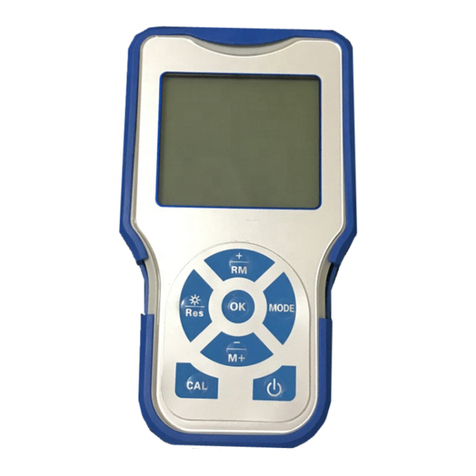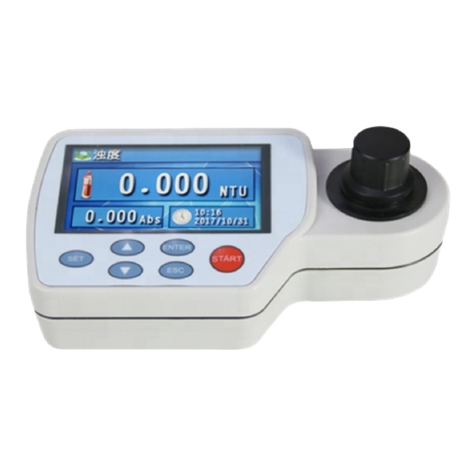
4.1.3.Insert the PH composite electrode and the temperature electrode into the
corresponding interface.
4.2. Meter Calibration:
4.2.1. Press to enter into calibration mode, LCD displays the twinkling “ ”
indicate to enter into the first point calibration.
4.2.2. Wash the pH electrode in purified water and dry it, then immerge it into the pH7.00
buffer solution, rock the electrode holder and then still, waiting for the data stable and
appear “ ”, then again press key , the LCD will appear a twinkling 7.00
pH,make sure that this calibration is unmistakable, please press key to confirm
the first point,at this time the LCD displays the twinkling “ ”,Prompt for second
point calibration,Or press the key to exit the calibration mode.
4.2.3. Wash the pH electrode in purified water and dry it, then immerge it into the pH4.00
buffer solution, rock the electrode holder and then still, waiting for a stable data and
appear“ ”,then again press key , the LCD will appear a twinkling
4.00pH,make sure that this calibration is unmistakable, please press key to
confirm the second point,at this time the LCD displays the twinkling “ ”Prompt
for the third point calibration,Or press the key to exit the calibration mode.
4.2.4. Wash the pH electrode in purified water and dry it, then immerge it into the pH10.01
buffer solution, rock the electrode holder and still, waiting “ ” for the data stable
and appear, then again press key , LCD will appear a twinkling 10.01
pH,,make sure that this calibration is unmistakable, please press key to
confirm the third point, at the same time, exiting the calibration mode into the
measurement mode,at the same time, the lower right corner of the LCD displays
simultaneously,the representative instrument was calibrated at third
points.





























